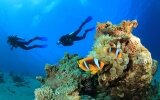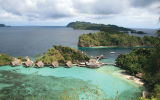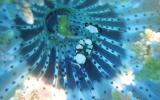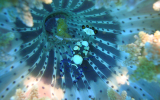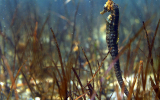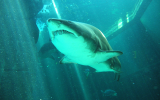- Magazine
- #readityourway
- Weekly Stories
- #shareyourstory
-
Adventure
- Abroad Travelling
- Africa Travelling
- Events
- Expos & Shows
- Festivals
- Fishing
- Free Diving
- Gliding
- Horse Riding
- Inspiring People
- Islands Travelling
- Kite/Windsurfing
- Motorbiking
- Motorised Water Sports
- Mountaineering
- Mountain Biking
- Off-road 4x4
- Off-road Motorbiking
- Paddling
- Performance Driving
- Photography
- Rock Climbing
- Rollerblading
- Sailing
- Scuba Diving
- Skateboarding
- Skydiving
- Snowboarding & Skiing
- Surfing
- Swimming
- Trail Running
- Wakeboarding
- Waveski Surfing
-
Sport
- Adventure Racing
- Fishing
- Free Diving
- Gliding
- Health & Fitness
- Horse Riding
- Inspiring People
- Kite/Windsurfing
- MMA
- Motorbiking
- Mountain Biking
- Multi-sport
- Off-road 4x4
- Off-road Motorbiking
- Paddling
- Performance Driving
- Photography
- Road Cycling
- Road Running
- Rock Climbing
- Rollerblading
- Sailing
- Scuba Diving
- Skateboarding
- Skydiving
- Snowboarding & Skiing
- Surfing
- Swimming
- Rugby
- Trail Running
- Triathlon
- Wakeboarding
- Waveski Surfing
- Lifestyle
- Calendar
Shark Diving - No cage required
Words: Dirk van den Berg | Photos & Video: Dirk van den Berg & Meriek Faber
Topic:
Scuba Diving
One of the reasons why people love to dive lies in the sense of discovery. And being able to ‘breathe’ underwater allows us to become explorers of this still very unknown world for brief periods. Just like a kid opening a lucky packet, we are excited about what we might find inside.

By its very nature, diving is a sport of chance and you never know what you might see or experience. But there is a place where you are guaranteed to have one of the best diving experiences of your life. A place where the viz is always great and you know exactly what you are going to see. The Two Oceans Aquarium, based at the Cape Town Waterfront, offers two exceptional diving experiences to the public. Think of it as a backstage pass to the best show in the world, with close and personal VIP access to the stars of the show; ragged tooth sharks, massive blue rays, eagle rays, yellowtail and a loggerhead sea turtle. Thanks to the Two Oceans Aquarium, I had the opportunity to experience both the Predator and Kelp Forest dives, and would happily go back and do it all over again!
Dive 1 - The I&J Predator Exhibit
The largest tank in the aquarium houses the I&J Predator exhibit and is home to four ragged tooth sharks, or Carchariastaurus if you want to call them by their correct name. You will also find black musselcrackers, blue rays, eagle rays, giant kob, giant yellowtail and a massive loggerhead, to mention just a few. The tank holds roughly two-million litres of seawater, has a maximum depth of five metres and is visible through a 4 m high by 11m wide acrylic panel. The water temperature is a slightly chilly 21 degrees, and there is an artificial current running counter clockwise in the tank, so its inhabitants tend to swim clockwise against the current to enable more water to flow over their gills with less effort. In short, this exhibit is breathtaking and you don’t have to be a kid to be blown away.
It is also here that you can dive with the raggies … no cage required. I discovered that the four sharks each have their own unique personalities. The first scouts the upper region of the tank, moving much faster than the rest in an almost patrolling behavior, while generally avoiding divers. The second and third sharks are somewhat curious and deceptively sneaky, as they come over to investigate when you are looking the other way. In a game of chicken, the fourth shark likes to slowly inch towards you on a straight trajectory, staring you down every inch of the way until the very last moment, when he elegantly changes course and swims straight past you. Your heart skips a few beats and then the amazement kicks in. You are diving amongst sharks with no protection and are closer to them than you ever thought possible. In fact, so close that you can count their teeth.
But let’s not forget about the other fascinating inhabitants of the exhibit. There are two rather inquisitive, but massive blue rays that will allow you to touch their bellies, which feel soft and jelly like, as they swim over head. They also like to attach themselves vertically flat against the viewing panels, much to the delight of the onlooking spectators, and I remember thinking how much they loved all the attention. The impressive loggerhead turtle is somewhat shy, somewhat curious and thoroughly enjoys having his shell scratched. Apparently the algae growing on his shell itches and irritates him, hence his love of a good scratch.
The great thing about this dive is that it offers non-divers the rare opportunity to share the experience with you, from the other side of the acrylic panel. Kids especially love it when a diver comes right up against the acrylic panel and interacts with them.
Dive 2: The Kelp Forest
The Ocean Basket Kelp Forest exhibition is one of only three in the world and a huge attraction at the aquarium. The tank is slightly smaller than the predator's tank, holding 800,000 litres of water, with dimensions of 12 m x 12 m x 6 m deep. At 13-15 degrees Celsius, the temperature in this tank is also considerably colder, and an artificial surge simulates the natural conditions in which kelp would normally grow. It is home to three different species of kelp, as well as abalone, galjoen, pyjama shark, red stumpnose, Roman and huge white steenbras, to name a few.
This dive's big draw card is the fact that divers are allowed to feed the fish. The fish are so used to being fed in this manner that they have become exceptionally tame towards divers, and almost obnoxious and demanding in their plea to be fed. They literally engulf the divers in the hope of being fed, but once the feeding frenzy has passed, they once again become relaxed and afford the diver a rare opportunity to get unusually close to them.
The smaller tank coupled with the artificial surge, engaging nature of the fish and tricky navigation through the kelp forest necessitates a minimum of an Advanced diving qualification. The Kelp Forest dive might not have the star quality and spectator value of the predator dive, but it has the tranquility of the kelp forest in surge and the intimate engagement with the fish.
I would like to thank Renee Leeuwner and the Two Oceans Aquarium for the wonderful opportunity to experience these amazing dives for myself. Now it's your turn.
dinFO
If you would like to experience these unique dives, here's some helpful information:
• Both the Predator and Kelp Forest dives are available daily in three time slots: 09h00, 11h00 and 13h00.
• Diving is open all year round.
• A qualified Dive Master leads all dives, and the engagements are very informative, even educational.
• Dives must be booked online at www.aquarium.co.za.
• The Predator dive requires an Open Water dive qualification, while the Kelp Forest dive requires an Advanced dive qualification. Divers have to produce a valid diving qualification before the dive.
• Divers can bring their own equipment or have the option of hiring all the required gear from the aquarium. I used the aquarium’s gear and I can recommend this option as the gear is in good condition and it saves you the effort of bringing your own.
• The cost of the dives depend on whether you bring your own gear or if you use the aquarium's gear.
A discount is given to members of the aquarium’s loyalty programme. So it may be worthwhile to join as a member, as the net cost might be slightly higher than just the dives with no discount. As a member, you will also enjoy all the accompanying benefits and discounts that the loyalty programme offers, for a year.
Prices
Non-members:
• Own gear: R475
• Aquarium's gear: R625
Members (less 25%):
• Member with own gear: R357
• Member with aquarium's gear: R469
For more information and to book these thrilling dive adventures email or visit the website - www.aquarium.co.za.
Issue:
Issue 22 Feb'13
Contributor:
Dirk van den Berg
Related content
|
|
|
|
|
|
|
|
|
|

